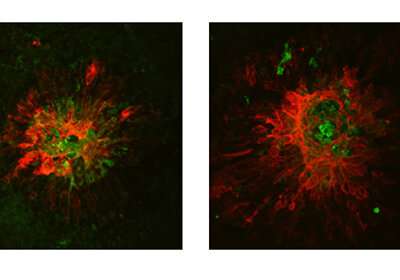Research points to new hope for treatment-resistant age-related macular degeneration

An oxysterol that accumulates in the eye with age can transform choroidal endothelial cells; interfering with the process might help patients with treatment-resistant age-related macular degeneration.
The latest research from the laboratory of John A. Moran Eye Center physician-scientist Mary Elizabeth Hartnett, MD, reveals how an oxidized form of cholesterol can change choroidal endothelial cells into cells that become scars and may wreak havoc in the eyes of age-related macular degeneration (AMD) patients.
The oxysterol 7-ketocholesterol (7KC) builds up in the body as a person ages, and in diseases including cancer and heart disease. In the eye, 7KC accumulates in Bruch’s membrane with age and in AMD—a leading cause of blindness for people over 55.
Examining the effects of 7KC in the eyes of mice, Hartnett lab researchers found evidence that the oxysterol can effectively change choroidal endothelial cells (CECs) into cells that then invade the neural retina and lead to fibrosis. The transformed cells become enlarged lesions and fibrosis similar to those seen in poorly responsive forms of neovascular or ‘wet’ AMD, which account for 40% of poor vision in neovascular AMD. The transformed CECs may be less responsive to anti–vascular endothelial growth factor (anti-VEGF), which is the standard care for neovascular AMD.
“Any time we give anti-VEGF to a patient there can be up to a 50 percent chance they will ultimately fail treatment and have poor vision, because the patient stops responding to them long-term,” explained Hartnett, a vitreoretinal surgeon and principal investigator of the study. “Of those that do not respond, 40% have fibrosis or scars. These findings provide a potential explanation for fibrosis and suggest that if we can interfere with this process, we might be able to improve outcomes in many more patients with neovascular AMD.”
First author, Haibo Wang, MD Ph.D., added, “The results indicate an important new direction of research.”
Source: Read Full Article


